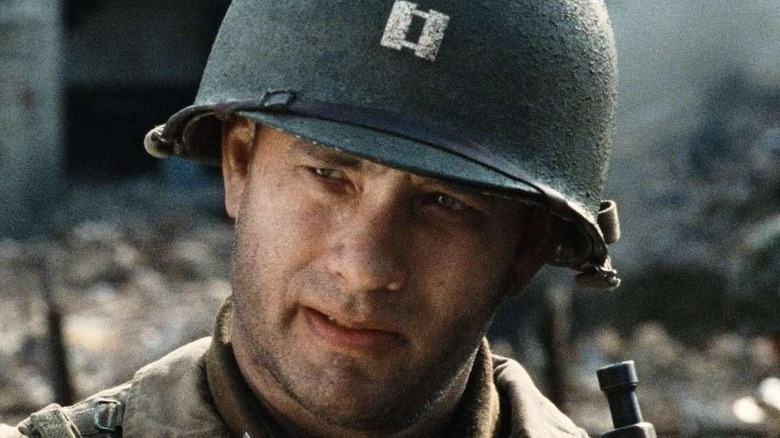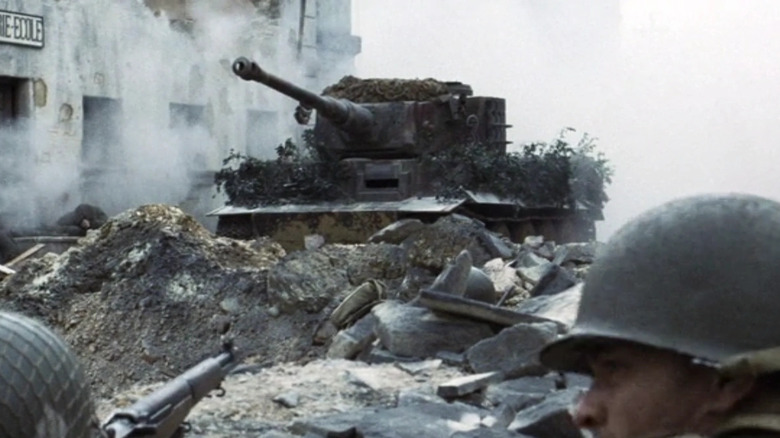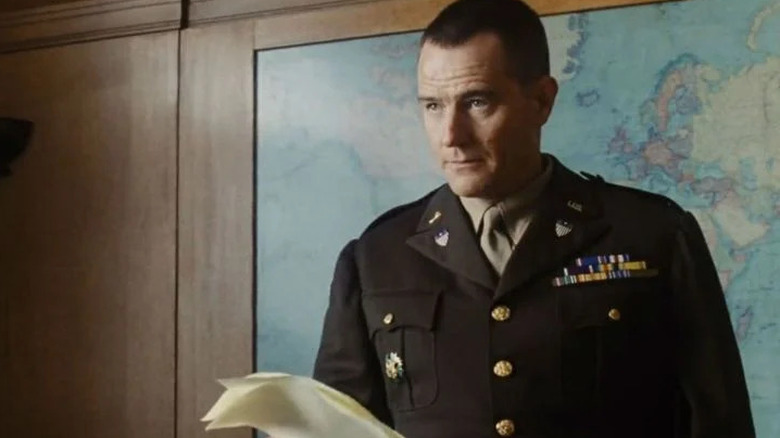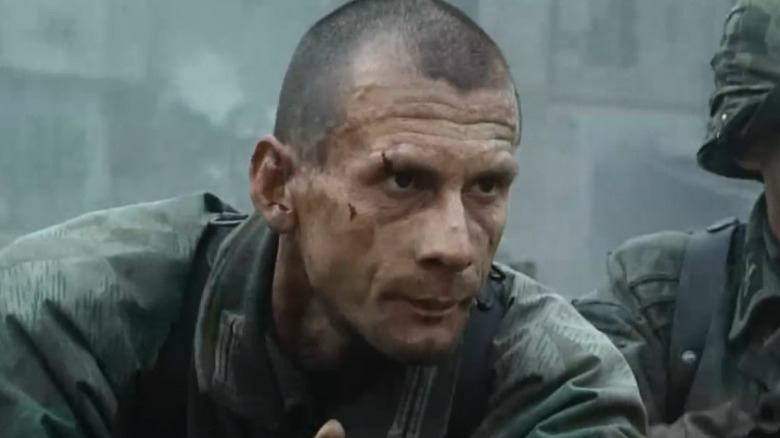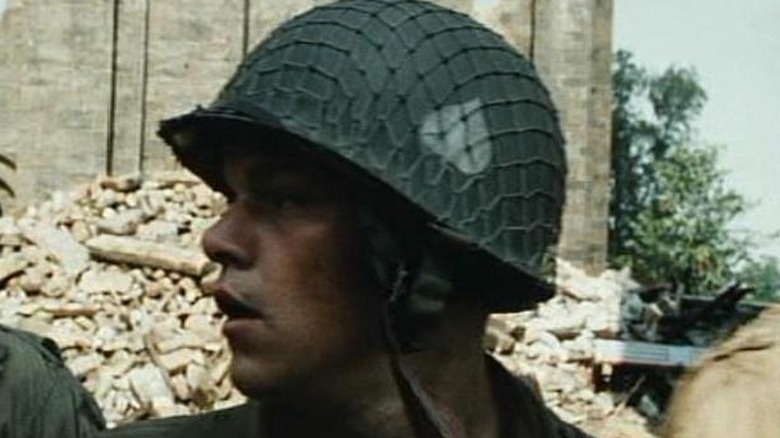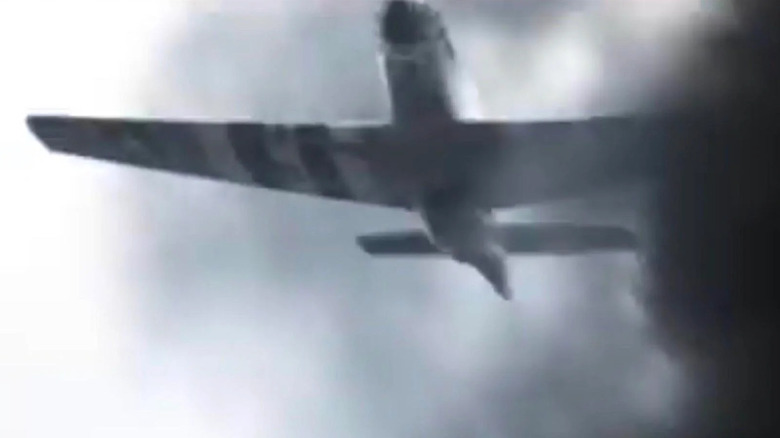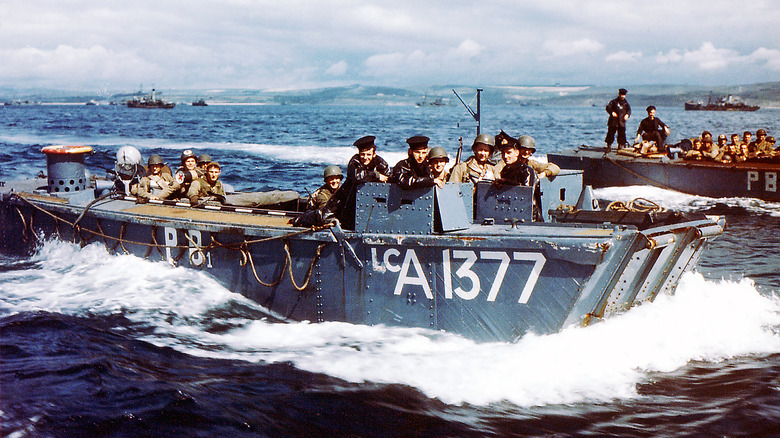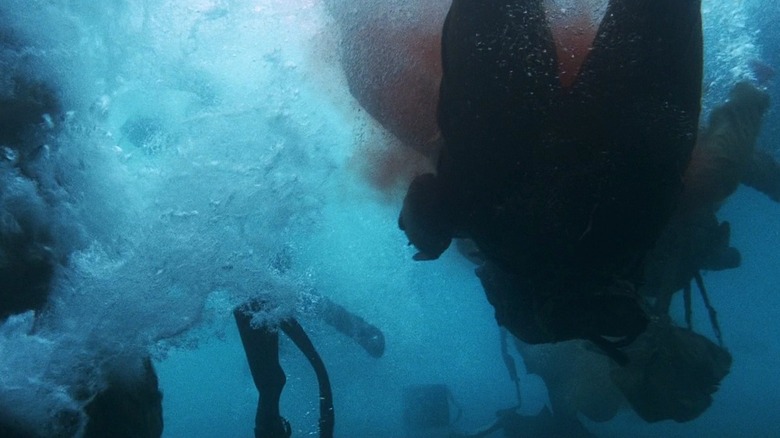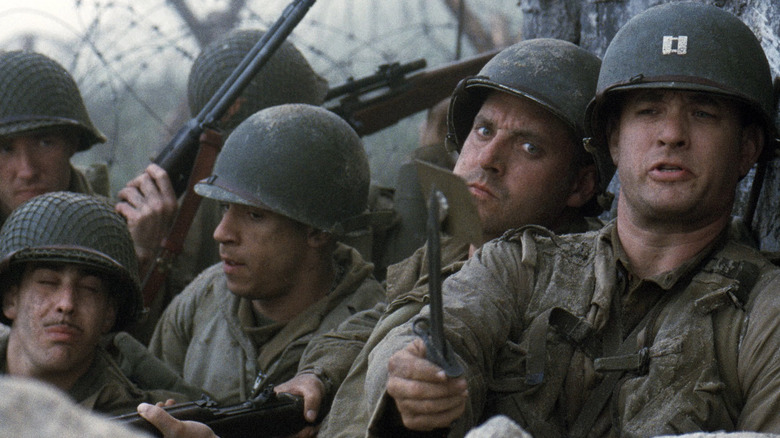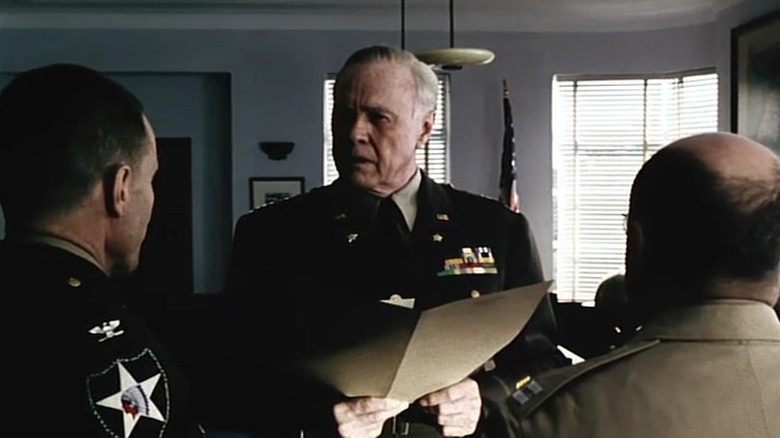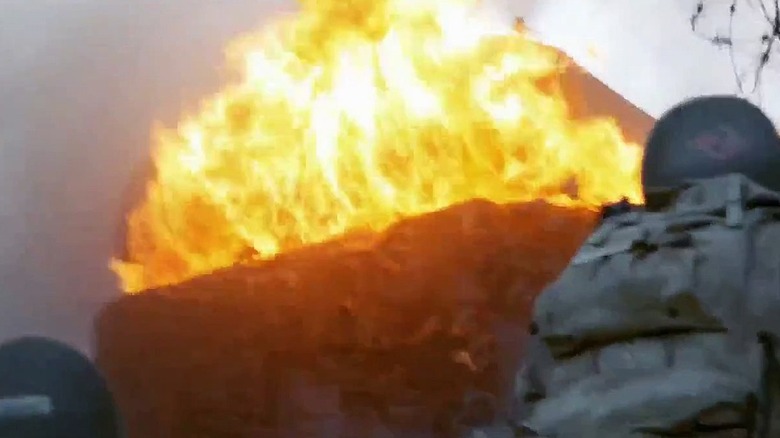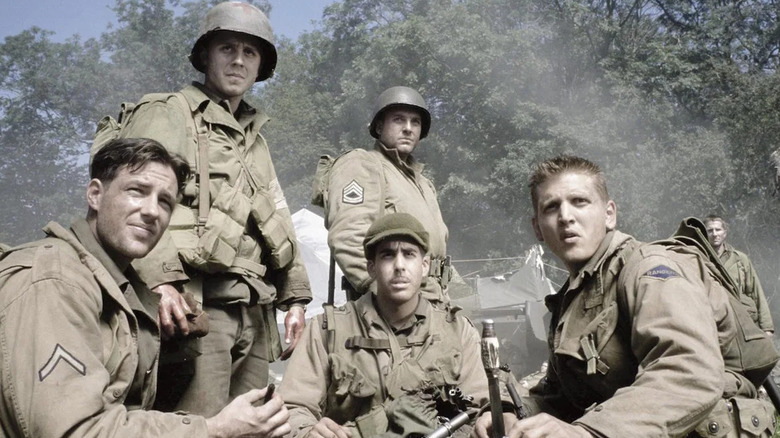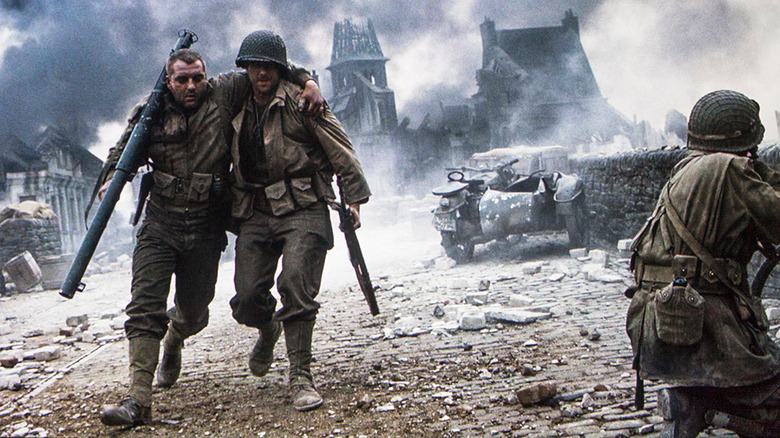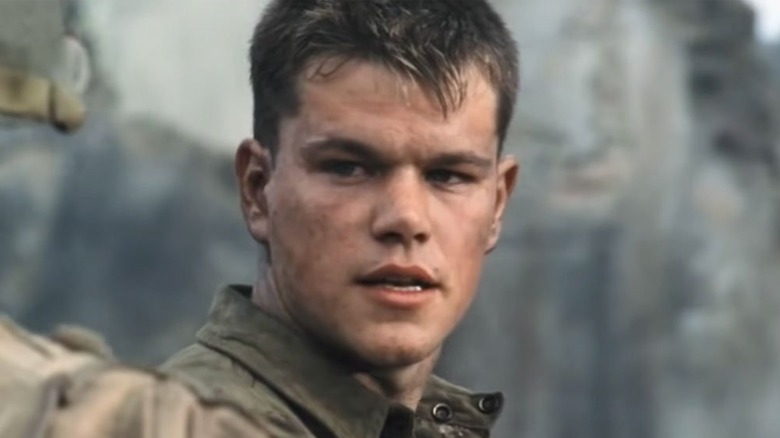Times Saving Private Ryan Got History All Wrong
"Saving Private Ryan" is remembered today as one of the finest World War II movies ever made, if not one of the greatest war movies ever made. Praised by critics upon its release in 1998, the movie achieved international success, winning numerous awards such as an Oscar and Golden Globe Award for Best Director, and the Golden Globe Award for Best Picture. It was also a huge financial success at the box office, becoming the third highest-earning movie worldwide that year.
Over the years, the reputation of "Ryan" has only grown, earning it credit for changing the way war films are made by using its phenomenal opening sequence to shed vicarious light on the historical D-Day invasion of Normandy — the largest amphibious invasion in human history and a critical turning point for the Allied powers.
As universally-praised as "Saving Private Ryan" is, however, if you look more closely you may discover some liberties taken with historical accuracy. While some are fairly minor — such as inconsistencies in World War II-era uniforms — others are more obvious, bending the laws of physics or fabricating historical incidents entirely. Here are the major things "Saving Private Ryan" got wrong in its depiction of World War II.
World War II weapons and vehicles
In any war movie, you can expect plenty of gunfire, explosions, and armored vehicles ranging from tanks to war planes. While the weapons and vehicles that appear in "Private Ryan" are true to history, however, the way they are used sometimes contains embellishments.
For example, the film frequently ignores the heat of the weapon barrels after being fired for prolonged periods of time. During the D-Day invasion of the Allies, with Nazi machine gun nests firing MG-42s incessantly at advancing Allied beach parties, this became a problem. Historically, the German Army strictly forbade soldiers from firing the MG-42 for too long, instead preaching the importance of firing in shorter, controlled bursts to avoid overheating the barrels. If the machine guns were fired as relentlessly as we see in the film, the barrels would've grown so hot that they would have literally melted, rendering the guns useless.
There are also several small mistakes the movie makes in regards to World War II vehicles. In the film's climactic final battle, Captain Miller sticks his submachine gun through the viewport of a Tiger I Nazi tank and fires into the vehicle. Tiger I tanks' viewports came equipped with multiple layers of heavy glass, in fact, preventing such enemy gunfire from entering through the viewport.
The map isn't historically accurate
In a brief scene following the film's D-Day invasion, the US Department of War is notified of the deaths of Private Ryan's three brothers. When the War Department Colonel (played by Bryan Cranston) learns that Mrs. Ryan will receive 3 telegrams with the news that her sons have been killed, you can spot a map of the world in the background. Looking closely, the map seems to be a Mercator projection — a then-popular, widely used map of the world with some slightly exaggerated geographic features (such as Greenland appearing to be the same size as Africa, and Alaska the same size as Australia). During World War II, this specific sort of map was not used by the US military, who instead relied on a very different layout of the world.
Throughout World War II, artist Richard Edes Harrison's projection of the world was favored by the US military. In his depiction of the globe, Harrison favored placing North America in the center of the map, splitting Eurasia into two (Europe and Africa appeared to the right of the map, while most of Asia and Australia appeared on the left). In doing so, Harrison wanted to convey that the entire war "pivots around the US." It was this depiction of the world that proved popular among US government and military personnel at the time, who used Harrison's map throughout their war-time offices.
Smaller details about the German army
"Saving Private Ryan" accurately, unfortunately depicts all-too-real wartime atrocities committed by both sides, from Americans shooting surrendering POWs to Nazis brutally killing wounded American soldiers. While the movie presents the Nazi military as cold-blooded and merciless as they were in real-life, there are some details about the German army that the movie was not so accurate about.
Foremost among these mistakes was the fact that many Nazi soldiers are shown to have shaved heads, such as the character of "Steamboat Willie" (Joerg Stadler). While it might be common practice for soldiers to keep their hair short today, in '40s Germany, most Nazi soldiers favored a hairstyle known as the "Prussian crewcut," or the "undercut." This hairstyle was popular from the 1910s to the '40s and featured shorter, buzzed sides with the hair on the top of the head remaining long.
Like most hairstyles, the origins of the undercut are difficult to trace, but it's likely rooted in World War I history, when military barbers had to quickly and uniformly cut dozens of soldiers' hair within a limited time span — shaving the sides and back of a soldiers' head to save time. In an impressive nod to historical accuracy, other post-WWI TV shows like "Peaky Blinders" and "Boardwalk Empire" feature veterans sporting undercuts in civilian life, illustrating how popular the haircut was in Europe and America at the time.
The American paratroopers' uniforms
Like the physical appearances of the German military, "Saving Private Ryan" suffers from some small discrepancies between historical fact and cinematic fiction when it comes to the appearance of American paratroopers' uniforms.
In the film, paratroopers are seen wearing either brown or black jump boots as part of their uniform. Given the movie's setting in 1944, however, every paratrooper should be wearing brown jump boots, standard issue among troopers throughout that entire decade. Only later, in the 1950s, would black leather be used for paratrooper-issued boots.
Additionally, nearly every paratrooper that appears in the film has a white spade mark on the side of their helmet. While it was common for military units to have the distinct insignia of their regiment on their helmets, the spade belonged to the 506th Infantry Regiment. Soldiers belonging to different regiments would have had different insignia markings on their helmets; for example, when Private Ryan (Matt Damon) is first introduced, he appears alongside Corporal Henderson (Max Martini), a member of the 501st Infantry Regiment. Nevertheless, Henderson is wearing the white ace of the 506th (in reality, Henderson's helmet should have the 501st's traditional white diamond).
The American plane in the final battle is inaccurate
During the final battle at Ramelle, remaining American soldiers were miraculously saved by the arrival of a US fighter plane — the North American P-51 Mustang. "Ryan" shows that when the fighter passes overhead, the Mustang has a distinct checkered pattern on its wings, indicating that the plane belongs to the 78th Fighter Group. While the 78th eventually flew P-51 Mustangs into battle, like most American Air Force units, they flew the more commonly-used Republic P-47 Thunderbolts during the events of this film.
The 78th officially made the conversion to the P-51s in December 1944, nearly half a year after the D-Day invasion. Despite being referred to as "tank busters" by Ryan, the P-51s were known more for escorting heavy bombers on airborne missions than specializing in combating German tanks. Also, the fighter is shown dropping heavy ordinance on the advancing Germans, even though it clearly lacks a bomb rack or any additional rockets attached to its wings or belly.
The fighter was shown once more, flying towards Miller and the Americans at the end of the battle, which would be against standard Air Force protocols. American fighters would never attack an enemy from behind, as that would mean dropping ordinance towards friendly units on the ground below, putting them at significant risk. Instead, the planes would have flown either from behind the American forces, or perpendicular to the bridge.
Other Allied powers had a major part to play in the Normandy invasion
Unsurprisingly, the opening sequence of "Private Ryan" focuses nearly entirely on American forces playing an extensive role in the invasion of Normandy. While it is true that the US military played a vital role in capturing Omaha and Utah Beach, however, what isn't shown is the other Allied forces who assisted in those D-Day beach landings. Notably missing is the appearance of British military forces, who had an active role in helping the Americans secure the Nazi-occupied beaches.
In the opening moments of the battle, American soldiers are being transported to the beachhead via a landing craft known as LCVPs (aka Higgins boats) used by the US, Maltese, and French navies from 1942 to 1945. LCVPs were indeed used during the beach landings at Normandy, but only in subsequent assault waves.
In the first wave (the one Tom Hanks' Miller and his company are shown landing in), British Landing Craft Assault vehicles (LCAs) were used due to their heavy bodies and added protection compared to the wide-open bodies of the LCVPs (since the first wave faced the heaviest enemy fire). The British ferried American forces from offshore naval vessels to the beaches, with the Royal Navy contributing multiple transport ships to the assault.
Bullets are unable to pierce water at lethal speeds
While "Saving Private Ryan" does a great job portraying the horrors of the D-Day invasion and the bravery of American Allies storming the beaches of Normandy, one of the dangers it depicts wasn't nearly as dangerous as the film would lead you to believe. Shortly after the US Rangers launch their first wave of assault on the Nazi-occupied beach, many men can be see in the water. Fatigued from seasickness and weighed down by their heavy equipment, in real life many of these men were unable to reach the surface and sadly drowned; others were shot by continuous German machine gun fire from the beaches.
The idea of a bullet piercing through the water and killing men below the surface, as depicted in the film, is simply a commonly-used Hollywood invention. In real life, when a rifle-caliber bullet is shot at a body of water, it loses all lethal momentum and will sink harmlessly after its initial impact past the water's surface. But these were really high-powered bullets, right? Well, according to the site Science ABC, the faster the bullet is traveling, the slower it will go underwater.
The D-Day invasion was worse than depicted in the film
The opening scene of "Ryan" blew viewers away in 1998 and still does today, dropping the viewer into the middle of terrifying, unending chaos and death as soldiers scramble for their lives and missions as bullets, blood and bodies pile up around them. Shown in lengthy, graphic detail, Spielberg makes the viewer uncomfortable — while simultaneously driving home a point about the extreme acts of heroism and bravery displayed by the Allies in the face of such overwhelming defenses.
As brutal as the scene is, the real-life Omaha beach landings were even worse.
For starters, the beach the American forces land on is a fairly small one; in reality, there was a 200-yard distance between the shoreline and the German defenses.
In the film, Captain Miller and his company arrive as part of the first wave of American forces on Omaha Beach, almost immediately pushing their way up the beach towards the German lines. In reality, the Allies weren't able to advance up that beach until the third landing group arrived, with the assault taking hours to complete (it takes about a half hour in the film). Of course, for the sake of brevity, it's understandable why Spielberg had to cut the landing down; the resulting 30 minutes still offers a lengthy, largely accurate depiction of D-Day.
Lincoln was misinformed in his letter
When deliberating on whether to send someone to find Private Ryan and withdraw him from active service, General George C. Marshall (played by Harve Presnell) recited a letter from President Abraham Lincoln to a Mrs. Bixby of Boston, Massachusetts, informing her that her five sons have all died in battle. Emboldened by Lincoln's words, Marshall decided to send Miller and the remnants of his company to find Ryan and bring him home.
Despite Lincoln's letter to Bixby itself being real, the contents of the letter were far from the truth. As The Atlantic's John Biguenet points out, President Lincoln had been fed false information when he wrote his letter to Mrs. Bixby. Only two of Bixby's sons had been killed in the Civil War. Of the remaining three sons, one was captured by the Confederates and later traded back to the US army in a prisoner exchange, with the final two eventually deserting the Union army.
While the letter itself may be moving, its publication also stirred a lot of controversy when it was originally sent. With the contents of the letter having been publicized in the media, many of Lincoln's opponents viewed it as being a "cheap" attempt to appear sympathetic to families who had lost loved ones to the Civil War, rather than the gripping words Marshall saw them as when he read the letter aloud to his staff.
Flamethrower canisters don't explode when hit by gunfire
Early in the film, a member of the American landing party on Omaha Beach bursts into flames when the flamethrower on his back is shot, exploding on impact. Contrary to popular belief, flamethrower canisters are not susceptible to spontaneous explosions under gunfire.
Before being sent into battle, flamethrower canisters were tested by field instructors who would even fire live rounds at the canisters to ensure they would not explode under such conditions. In one particularly well-known example, flamethrower operator and Medal of Honor-recipient Woody Williams crawled for over four hours on the beaches of Iwo Jima under heavy small arms fire, with his flamethrower protecting him from enemy gunshots because they would ping harmlessly off the outer canister.
At most, even if a bullet did penetrate the thick metal layer of the flamethrower canister, the result would likely only be a small leak from which fuel could escape. Because bullets cool dramatically after they are initially fired, by the time it pierced a flamethrower canister, it would not be hot enough to trigger an explosion — no matter what you've seen in movies, TV shows, and video games.
The "secret code" to identify allies was backwards
Several times in "Saving Private Ryan," American soldiers are heard using a secret code to identify Americans in the field. In scenes where this occurs, the soldiers shout "thunder," and a nearby friendly responds by shouting back, "flash."
In fact, this was an authentic call sign used by the US military during the D-Day Invasion. However, the order in which it is said has been reversed for the film; in actuality, the challenge sign was issued by a soldier saying "flash" and the all-clear sign of a friendly ally was meant to be indicated with "thunder."
This may seem like a minor mistake at first, but its basis in historical fact is an interesting one. In the German language, there exists no such sound as "th," meaning that — even if a German soldier knew the correct response — he would have a difficult time saying "thunder" without exposing his accent. So, while the pass code and response were indeed used in World War II, the codes and responses changed on a daily basis. Soldiers were expected to memorize both the code and designated response phrase, as well which day specific codes were scheduled to be used.
The battle at the end of the movie is completely fictional
While the first act of "Saving Private Ryan" is largely rooted in fact, the remainder of the film takes on a far more dramatized presentation of World War II history. In particular, the battle at the end of the film — and even the town of Ramelle that Private Ryan is stationed in – are completely fictional.
In the film, we learn that Ryan and his fellow paratroopers have received orders to secure the bridges along the Merderet River. While this was indeed a historical objective of the US military following the Normandy invasion, the task was assigned to the 82nd Airborne Division under Operation Boston (Ryan belonged to the 101st Airborne Division — not the 82nd).
Similarly, while the Nazi division the protagonists battle at the end of the movie (2nd SS Panzer Division Das Reich) was an actual elite Waffen-SS infantry unit, their appearance in the film runs contrary to their actual combat records. Before D-Day, Das Reich held a strategic position in southern France to quickly combat an invasion force on either French coast. When the Allies landed, Das Reich attempted to move by train towards Normandy, only to find the railways already sabotaged by French freedom fighters, forcing the division to march north by foot, taking weeks to finally reach Normandy. When they did arrive, they ended up battling British and Canadian forces at Caen in mid-July, not American forces as shown in "Private Ryan."
The plot of Saving Private Ryan is based partly on a historical incident
As unbelievable as it may seem, the plot of "Saving Private Ryan" was based on an actual incident that took place in World War II. During the naval battle of Guadalcanal, the U.S.S. Juneau (CL-52) was sunk by Japanese torpedoes, killing nearly 700 men, including five brothers (the Sullivans) who were onboard – the 1944 film "The Fighting Sullivans" would later dramatize their story (with significant embellishment). After the news of the brothers' deaths was publicized in the US, the military introduced the Sole Survivor Policy, exempting the sole surviving member of a family from military service if all their siblings had died in the line of duty.
The policy was put in place near the end of 1942, and cited as the reason why a US paratrooper — Fritz Niland (the basis for Damon's Private Ryan) — was ordered home in the middle of the Normandy invasion. Like Ryan, Niland had three brothers who were all reported KIA, resulting in Niland being ordered away from the front and stationed to England for the remainder of the war. Similar to Ryan, Niland initially refused to leave, though was ultimately forced to follow his superiors' orders.
Incredibly, Fritz and his family would receive some amazing news following the war: Fritz's older brother, Edward, had in fact survived his crash in Burma. After being liberated from a Japanese POW camp, Edward joined Fritz in the US, reuniting the family.
